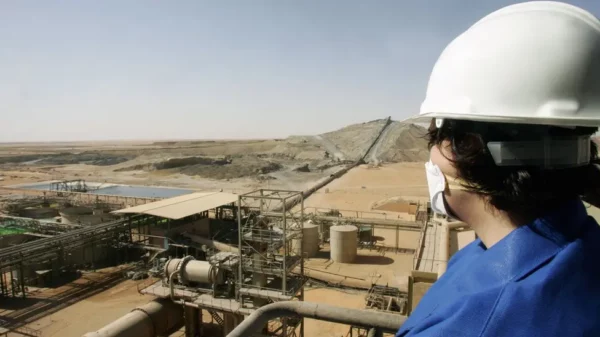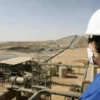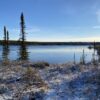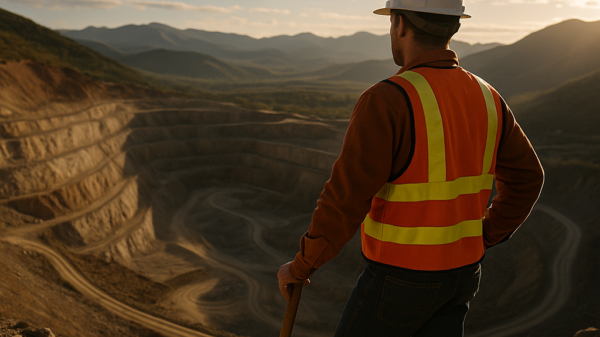Cosa Resources Corp. (TSXV: COSA) (OTCQB: COSAF) (FSE: SSKU) received the necessary permits from the Government of Saskatchewan to perform ground-based geophysics and exploration at its Ursa uranium project in the Athabasca Basin.
The company said on Wednesday that the project will allow for the construction of access trails, and building camps to host both geophysical surveys and drilling. These permits are valid until June 2025, enabling multiple seasons of drill testing and exploration work.
Trail construction is set to begin in the fourth quarter of 2023, followed by surveys and diamond drilling in the first quarter of 2024.
Cosa is currently selecting contractors for tasks such as trail establishment, geophysical surveying, diamond drilling and setting up temporary work camps.
Trail construction activities are expected to start in December, followed by geophysical surveying early in 2024. The company will also start moving diamond drilling equipment and personnel as it determines drill targets.
Cosa plans to use the winter access trail to transport supplies and equipment for an expanded summer drilling campaign at Ursa.
“Saskatchewan’s status as a favoured uranium exploration district is built on the Athabasca Basin’s long history of discovery, development and production of Tier 1 uranium deposits and the Province’s reputation as a stable, low-risk political environment,” said Keith Bodnarchuk, president and CEO.
Ursa encompasses 65 kilometers of strike length along the Cable Bay Shear Zone, which is a highly promising and relatively unexplored geological setting similar to the one that has supported significant uranium mining activities in the eastern Athabasca region.
A recently conducted airborne survey at Ursa has mapped more than 100 kilometers of strike length for the basement conductive trend within the project area. In a 3-D conductivity model, multiple kilometer-scale zones of heightened conductivity have been identified in the sandstone layer above the conductive basement, a geological context consistent with several major deposits in the Athabasca Basin.
Cosa has pinpointed 10 initial target areas at Ursa for further investigation through ground geophysics and drilling in 2024 and beyond. None of the 15 historical drill holes within the project, including three that encountered weak uranium mineralization, are situated within these initial 10 target areas.

Map of the Ursa property. Image via Cosa Resources.
Read more: ATHA Energy defines 18 high-priority prospective mining targets after EM survey
Read more: ATHA Energy aerial surveys over Athabasca Basin reveal strong potential for uranium
Small modular reactors could change the way countries source power
Uranium mining operations like that of Cosa Resources are going to be increasing in the future as demand for the radioactive rock increases. Part of this demand is the recent re-emergence of nuclear technologies, and the arrival of small modular reactors (SMR), which promise to revolutionize the way countries source their power.
In a recent example, Saskatchewan power authority, SaskPower announced a partnership with Ontario Power Generation and Laurentis Energy Partners to help develop small modular reactors.
“Today’s announcement is about so much more than a partnership agreement,” said SaskPower CEO Rupen Pandya on Monday.
“Not only does it mark another milestone for our small modular reactor development project, but it also marks the leading role our provinces are poised to play in nuclear power development in Canada and around the world.”
🔥🦶 Hot on the heels of Sweden’s announcement last week, Canada 🇨🇦 follows suit ♠️♣️♥️♦️with today’s announcement that @opg will build North America’s first fleet of Small Modular Reactors (SMRs). @SaskPower is one of the partners and is expected to select a site for its own… pic.twitter.com/eYKKP1GCHf
— ATHA Energy Corp (@athaenergycorp) November 20, 2023
According to the World Nuclear Association, powering 440 reactors annually requires around 74,000 tonnes of uranium oxide concentrate, containing roughly 62,500 tonnes of uranium (tU).
This uranium comes from mines or their equivalents sourced from stockpiles or secondary sources. This demand encompasses the provision of initial cores for newly commissioned reactors.
While the capacity is slowly increasing, reactors are operating more efficiently, with higher capacity factors and power levels. However, the factors driving increased fuel demand are counterbalanced by a trend of rising efficiencies, resulting in demand dampening. Over the 20 years from 1970, there was a 25 per cent reduction in uranium demand per kilowatt-hour (kWh) output in Europe due to ongoing improvements, which continue to this day.
The addition of increase in capacity will require approximately 150 tU per year of increased mine production as a routine requirement and about 300-450 tU for the initial fuel load.
The market is expected to continue growing over the next ten years.
The 2021 edition of the World Nuclear Association’s Nuclear Fuel Report‘s Reference Scenario predicts a 27 per cent increase in uranium demand from 2021 to 2030, correlating with a 16 per cent rise in reactor capacity. This increase will necessitate the creation of many new reactor cores, driven in part by the expected recovery in electricity demand following the pandemic.
The reference scenario projects 38 per cent increase in uranium demand for the decade spanning 2031 to 2040.
In the medium term, critical factors in the uranium market will include the licensing of plant lifetime extensions and the economic attractiveness of continued operation for older reactors. However, with electricity demand by 2040 potentially surging by about 50 per cent compared to 2019 levels significant potential for nuclear capacity growth in a world deeply concerned with reducing carbon emissions.
The Athabasca Basin in Saskatchewan is going to play a big role in this effort going forward.
Read more: ATHA Energy well-positioned to capitalize on world’s best uranium jurisdiction: TF Metals interview
Read more: ATHA Energy performs largest multi-platform EM survey in the history of the Athabasca Basin
Athabasca basin holds the world’s largest uranium reserves
The basin is in Northern Saskatchewan and Alberta, Canada, and it encompasses approximately 100,000 square kilometers. It holds the world’s largest uranium reserves and contributes to 15.5 percent of the annual global uranium production.
In addition to Cosa Resources, there are a number of different companies working hard to meet the swiftly growing demand for uranium. A few of these include F3 Uranium Corp. (TSV: FUU) (OTCQB: FUUFF), which found high amounts of radioactivity, a key indicator for high grade uranium, during its summer drilling campaign.
Skyharbour Resources Ltd. (TSXV: SYH) (OTCQX: SYHBF) (FSE: SC1P) is another company operating in the basin. It acquired the 30,349 acre South Dufferin Uranium Project from Denison Mines Corp (TSX: DML) over the summer. The project spans nine claims.
ATHA Energy Corp. (CSE: SASK) (FRA: X5U) (OTCQB: SASKF) is one of the strongest options for companies operating in the basin on the strength of its property size.
ATHA holds the largest uranium exploration portfolio in the highest grade uranium district in the world. It’s recently completed a series of large-scale electromagnetic surveys over its properties in search of potential spaces to drill.
The company organizes its Athabasca Basin projects into four distinct exploration districts: the North Rim District, East Rim District, West Rim District and Cable Bay District. These districts encompass all the major producing, past-producing, and developing uranium mining camps within the Basin.
Mining operations in the Athabasca basin are working to meet the rising demand for uranium caused by emerging technologies, and the desire for a cleaner and safer future.
ATHA Energy Corp. is a sponsor of Mugglehead news coverage














